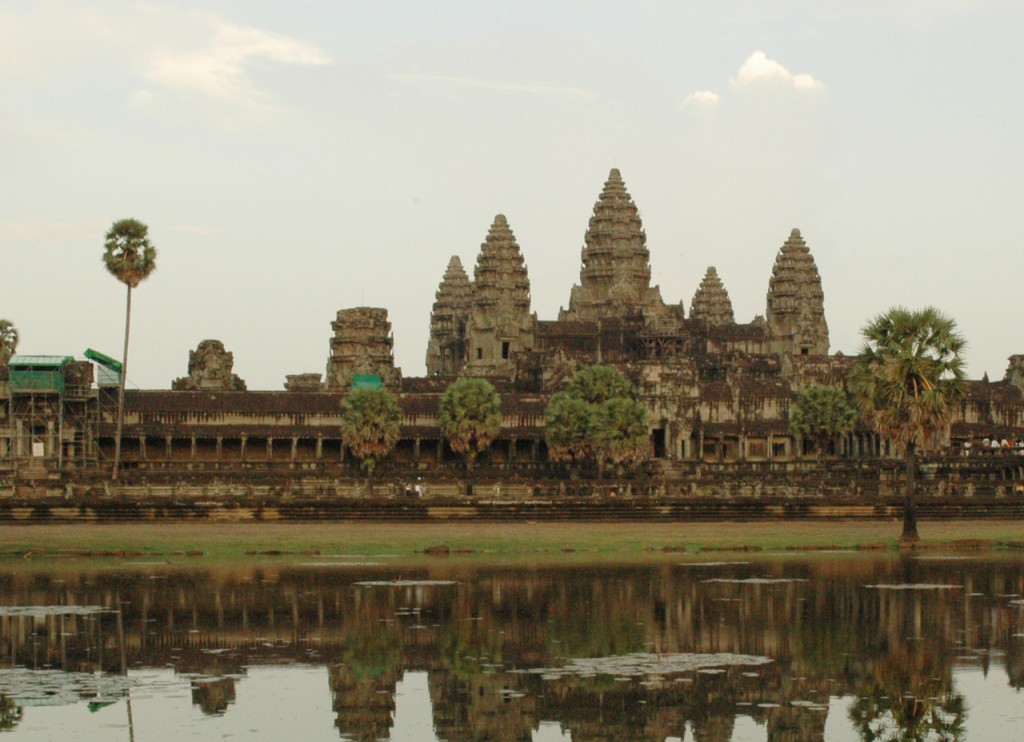The first rays of the sun touch the central towers of Angkor Wat. A group of young monks, their robes a luminous orange, cross the causeway to the world’s largest religious building. A stone’s throw away, rice paddies and golden temple roofs shimmer in the morning sun. Old women, their heads hidden under red headscarves, rest in the shade of giant banyan trees, chewing betel.

Angkor Wat viewed from the Northeast. Photo by Steve Cornish licensed Creative Commons Attribution.
I still vividly remember my own first glimpse of Angkor Wat. I was riding a motorcycle along the wide, tree-lined road from the ticket booths toward the temples. Monkeys swung from the trees. A couple of elephants stood in the shade, waiting for passengers. I turned and followed the road running parallel to the dark green water toward the causeway. Suddenly, across the moat, I glimpsed the massive central towers rising out of the dense foliage. It was a pleasant surprise, then disbelief at the temple’s form and sheer size kicked in; the forest ambience induced a personal sense of discovery.
Kampuchea, as the Khmer call their homeland, has a timeless, mysterious, and somewhat anarchic quality, quite unlike any land you have visited before.Mass tourism has discovered Siem Reap, the boomtown nearest the temples, but the monuments will always remain a sublime experience. True marvels to behold, the temple ruins of Angkor—stone remnants of the Khmer Empire, which ruled much of Southeast Asia almost 1,000 years ago—have put Cambodia on the map and attract more than two million foreign visitors a year. No one leaves disappointed.And you can add to the monuments the bustling markets, the quiet streets, and the funky art galleries of Battambang; the remote forest temples away from the main highways; and the lively bars in Phnom Penh. Here, in the capital city, the smell of fried food wafts across the street, monks collect alms and policemen collect bribes, laughing children pass by on bare feet, and old men silently sit at roadside cafés, nudging glasses of thick, sweet coffee. After sunset, young lovers race their bikes through darkened, potholed streets, thousands of insects hover around flickering streetlamps, and sidewalk restaurants are crowded with foreign visitors and local families.
A journey to Angkor Wat is an adventure, an experience, a moment in time. Above and beyond the magnificent sights, visitors are rewarded by the warm welcome of Cambodia’s people. Despite the country’s tragic recent history, despite poverty and years of isolation, the sourire khmer—the Khmer smile—remains intact. Kampuchea, as the Khmer call their homeland, has a timeless, mysterious, and somewhat anarchic quality, quite unlike any land you have visited before.
Spend some time exploring the temples with our three-day Angkor Wat travel itinerary.×Excerpted from the Second Edition of Moon Angkor Wat.